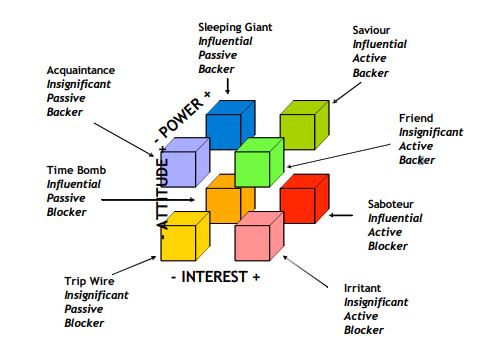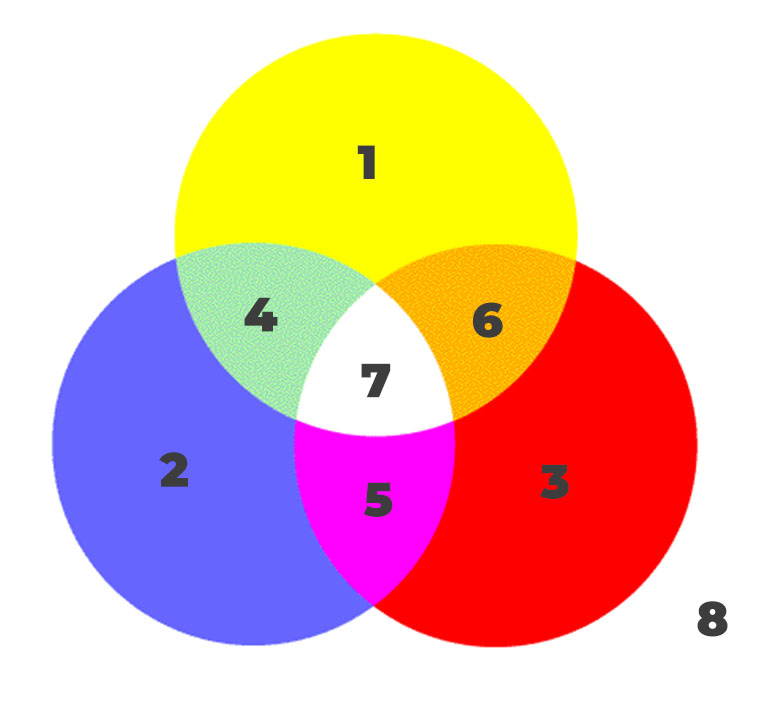Project management is a complex affair. One of the critical parts of project management is the stakeholder mapping. We shall see, what exactly is stakeholder mapping techniques. We shall also see how we can use it to improve project management. Stakeholder mapping can go a long way in helping us manage projects. It helps us increase efficiency and keeping the different stakeholders happy.
Contents
Introduction to stakeholders
Stakeholders are persons who are connected with the project at hand. They can be either persons, individuals, groups, or organizations. These are the people who are affected by the outcomes of the project. They can be either contributors or spectators. However, they have got some influence on the process of the project or the outcome. Additionally, we can have stakeholders that our internal like the employees. On the other hand, we can have external stakeholders like the buyers, or suppliers.
These people may be at different levels of involvement. Therefore, we can divide the stakeholders into three different categories:
- Primary stakeholders
- Secondary stakeholders
- Tertiary stakeholders
Firstly, the primary stakeholders are those people who are positively or negatively affected by the project. These are the people who have the strongest connection with the activities and the outcomes. Secondly, we have the secondary stakeholders. These types of stakeholders are people who are not directly affected by the project. However, they may be indirectly impacted. Thirdly, we have the tertiary stakeholders. These types of stakeholders are those who are minimally affected by the project.
Why stakeholder mapping is important?
Stakeholder mapping can be crucial in the identification and categorization of the stakeholders. Firstly, it is beneficial in reducing the effort. Secondly, it also reduces the burden on the stakeholders as they have to process less information. Thirdly, it increases the efficiency of communication. Fourthly, it speeds up the decision-making process. Finally, a formalized stakeholder mapping also takes away the ambiguity in other types of grouping.
What is stakeholder mapping?
Stakeholder analysis can be defined as categorizing and deploying stakeholder related actions based on priority. Overall, we can divide stakeholder mapping into four different steps:
- Identification and categorization of the stakeholders
- Analysis of impact
- Arrangement of stakeholders
- Communication and interaction
Identification and categorization of the stakeholders
We can identify the different stakeholders based upon some predetermined criteria. We can do this by ILM method.
| I | Influence | Influence of the stakeholder on the project decisions and strategy |
| L | Likelihood | How likely the stakeholder will enforce their expectations? |
| M | Means | Do they have means to enforce their expectations on the project. |
The stakeholders’ influence in a project can be either based upon their contribution or based upon the outcome. On one hand, a stakeholder like an employee or a contractor will have an impact as a contributor. On the other hand, a stakeholder like investors will be impacted by the outcomes of the project. However, both these types of stakeholders are important when we consider stakeholder mapping. In extreme cases, the negative influence of a person could lead to the derailment of the entire project.
Secondly, we should also consider how likely are these people to get impacted by the project. For instance, for a factory, one of the stakeholders can be the environmentalists. These people represent the interests of the environment. An example of a rare case of some environmental mishap could be the discharge of untreated effluents in a river. Firstly, these types of situations are less likely. However, when these types of situations occur, we should be preplanned and we should have these stakeholders in mind. This would be helpful in executing remedial actions.
Thirdly, we talk about the means of the stakeholders. Some of the stakeholders are stronger while others are weaker. We define this strength of the stakeholder entirely in terms of their power or influence. The customers who pay for a project may have much higher influence over the decisions than the bystanders.
Common stakeholder mapping techniques:
Now let us look at different stakeholder mapping techniques. All these techniques can be summarized in a few simple ways. The important criteria to map the stakeholders are:
- Power of influence
- Predictability
- Level of interest
- Positive or Negative Attitude
Firstly, let us talk about the power of influence. The power of influence is the ability or potential of the stakeholder to influence the workings or outcomes of a project. This power could either be derived from their position of authority. It could also be derived from their popularity in public. Also, in certain cases, people can derive power from the resources they have.
Secondly, predictability is another important criterion for mapping the stakeholders. The problems could either be predictable or unpredictable. The predictable problems are those that can be anticipated. For instance, all construction projects taking place in Japan have some predictable probability of an earthquake. Similarly, stakeholders can also be more or less predictable in terms of their actions.
Thirdly, we talk about the level of interest of the stakeholders. A stakeholder who has got a higher level of interest in the project will be more active in their involvement. On the other hand, stakeholders who have a lesser interest in the project will have a more passive role.
Finally, the attitude of the stakeholder is also important. Within the level of interest, we can also categorize their attitude as either positive or negative. Stakeholders with a positive outlook will support the project while those who have a negative outlook towards the project may try to resist it.
Technique 1: Power-Interest matrix
This is one of the most common methods for stakeholder mapping technique. As you can see in the figure, we’re mapping two variables in this matrix. The stakeholders’ power with respect to their level of interest. At the top left, we have got the quadrant of a low level of interest and low power. The type of stakeholders that fall into this quadrant will need minimal effort from the firm. An example of such a stakeholder would be the general public or a bystander. These people would have a minimal amount of power and they won’t have an active interest in acting in support or against.
High Interest & Low Power
Secondly, we have got the top right quadrant. In this quadrant, we can see that the level of interest is high, while the power is low. One of the examples of such a type of stakeholders would be the contractual workers. These employees would have a lot of interest in the project, but they don’t have a lot of influence over the decisions of the project. All those types of stakeholders don’t have much power, still, they need to be kept informed.
Low Interest & High Power
Thirdly, we come down to the quadrant on the bottom left. In this quadrant, you can see that the power is high, but the level of interest is low. One of the important examples of these types of stakeholders would be the government. Governments generally don’t try to interfere in their day-to-day businesses of the firms. However, when they deem necessary, they have got enough power to override the management, investors, etc. It is extremely important to keep these stakeholders satisfied.
High Interest & High Power
Fourthly, and finally, we come to the bottom right quadrant. In this quadrant, we see that power is high. At the same time, the level of interest is also high. Such a type of situation is very difficult to handle if it goes out of hand. These are important stakeholders for us. That is why they are called key players. One of the simplest examples of this could be consumers or clients. We have got immense power over the decisions and the outcomes of the project.

Technique 2: Power-Predictability matrix

Now let us look at the second of the stakeholder mapping techniques. Although this technique is not that popular, it is quite useful. The level of interest can predict the active or passive role of the stakeholder. Nevertheless, predictability can predict the possibility of certain outcomes from these stakeholders.
High Predictability & Low Power
Let us first look at the top left quadrant. In this quadrant, we see that the predictability is high while the power is low. Such a kind of situation can not be too difficult for the project managers to handle. Although any problem that arises from these types of stakeholders could be problematic, they can be handled quite easily. For example, a project may be stalled by the local authorities over some clearance. However, these types of clearance certificates are quite predictable and they have predetermined norms.
Low Predictability & Low Power
Secondly, we come to the top right quadrant. In this quadrant the power is low, but the predictability is also low. These types of problems generally cannot be predicted by the managers. Did come up with some surprise. However, these do not threaten the operations of the project. In this age of social media, we can have people who face certain problems with the project or the firm. They can voice their concerns on social media. These kinds of outbursts are totally unpredictable. However, they can be dealt with with a simple reply. Nevertheless, sometimes the problem can get more complicated and we may need some proactive social media policy.
High Predictability & High Power
Thirdly, let us look at the bottom left quadrant. In this quadrant, we see that the predictability is high. The power is also high. Each type of stakeholder presents unique challenges to the managers. However, it is not very difficult to deal with them as these problems are predictable. We can again take the example of government regulations. Many countries have very strict environmental regulations. However, these regulations are quite predictable and they are written down explicitly.
Low Predictability & High Power
Fourthly, and finally, we come down to the bottom right quadrant. Here we see that the power is high, but the predictability is low. This quadrant presents the most challenging problems for the managers. At the same time, such problems can also be looked up as opportunities. Let us consider the example that the customer seems unhappy with the progress of the project. This would put a lot of pressure on the management. It is extremely important to satisfy these stakeholders.
Technique 3: Power-Interest-Attitude matrix
This is a relatively new technique developed by Ruth Murray-Webster & Peter Simon in 2006. This technique combines different matrices into one and provides an overview of the stakeholders. In these metrics, three different dimensions of power, interest, and attitude are brought together.

In this Stakeholder Mapping Technique, we create a 3-D matrix that has 2x2x2 dimensions. In other words, we have two levels of interest. Two-level of attitudes and two different levels of power. As you can see from the diagram above, we have eight different quadrants here. The stakeholders can be accommodated in one of these eight boxes. A brief explanation of all the different types of stakeholder situations is explained right next to these quadrants.
Thereby we have eight different types of stakeholders as below:
- Savior
- Friend
- Saboteur
- Irritant
- Sleeping giant
- Acquaintance
- Time bomb
- Tripwire
This extensive list of different type of stakeholders can come handy as a powerful as a powerful stakeholder mapping technique.
Technique 4: Stakeholder mapping through the Salience Venn Diagram
Now let us look at a relatively contemporary perspective at stakeholder mapping. Mitchell, Agle, and Wood in 1997 proposed that stakeholders need to analyzed through the lens of their ‘salience.’ They propose that based upon three relationship attributes, we can ascertain the types of the stakeholders. These attributes are:
- Power
- Legitimacy
- Urgency
One common theme with the previous mattress is and this Stakeholder mapping technique is the ‘power.’ Based on the power relationship, we can summarize the stakeholders as below:
| Transactional relationship | Exchange transactions |
| Influential actions | |
| Social or moral obligation | |
| Stakeholder power dominance | Firm exists because of these people |
| Firm is dependent for survival, operation or growth | |
| Individual or group can dictate terms, influence or direct the firm | |
| Firm power dominance | Firm is responsible for wellbeing of the individual or group |
| Firm has legal, social or moral control or responsibility |

Based upon the Venn diagram above, we can now discuss eight different types of stakeholders. These stakeholders are not arranged as per their importance, but as per their overall mapping into the institution:
8 Types of stakeholders
- Discretionary stakeholders – These stakeholders have little urgency and power. However, they are known as discretionary stakeholders as they have legitimacy.
- Dormant stakeholders – The dormant stakeholders have power, but they do not have legitimacy or urgency. This also means that these type of stakeholders have are passive.
- Demanding stakeholders – As the name suggests, these cable stakeholders are demanding. These stakeholders exert their influence because of the urgency. However, they do not have sufficient power or legitimacy to back their claims.
- Dominant stakeholders – The dominant stakeholders are those who have both power as well as legitimacy. These stakeholders exert certain influence on the organization. However, their influence is not urgent.
- Dangerous stakeholders – These are the stakeholders that have both power as well as urgency. They can create a lot of nuisance inside the organization. These type of stakeholders need to be tackled swiftly and correctly. Worst thing is that they may not have legitimacy or involvement with the project.
- Dependent stakeholders– These type of stakeholders have urgent and legitimate needs. However, they do not have sufficient power to exert these needs. As a result, these are the stakeholders who are dependent on some other stakeholders to exert their influence.
- Definitive stakeholders – a definitive stakeholders are those stakeholders that have all these three ingredients. In other words, we can say that these are the stakeholders with the maximum influence. As a result, their salience on the firm is the highest.
- Non stakeholders – As the name suggests, these stakeholders do not have any say in the organization. Generally they lack the power, the urgency and the legitimacy. These type of people or group may become stakeholders in future if they qualify as per the three criteria set above.
